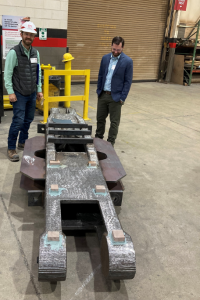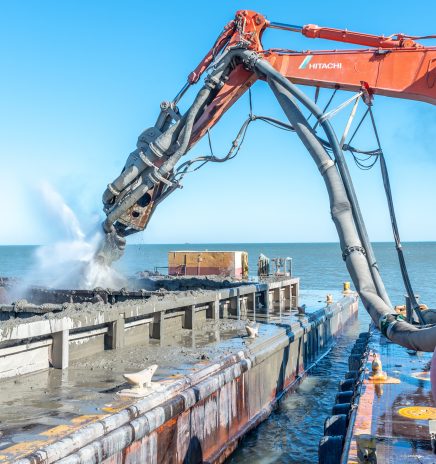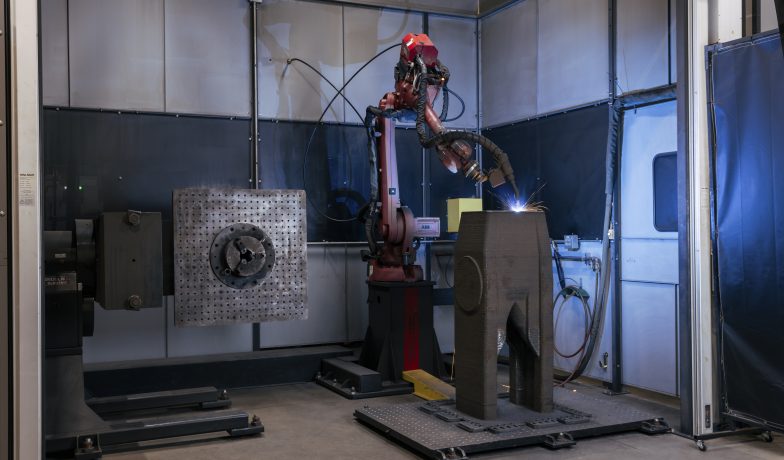New Poe Lock Arrestor Arm is Largest U.S. Civil Works Component Produced by 3D Printer

In February 2023, cracks were found in one of the 60-year-old lever arms used to raise and lower a large boom on the Poe Lock’s arresting system. Temporary repairs were made so the lock could operate during the 2023 navigation season.
USACE considered several design options and ultimately selected 3D printing as the best option, awarding the contract for the lever arms to Lincoln Electric.
The Soo Locks mechanical ship arresting system protects the lock’s miter gates, a critical system component, from an emergency impact with a ship. Each lock has two arrestors – one located upstream of each miter gate.

Ice Causes Shipping Delays on the Great Lakes
The Great Lakes-St. Lawrence Seaway System officially closed for the 2025 navigation season on January 5, but ice buildup created shipping delays leading up to the closure. Frozen waters caused... Read More

Toledo Harbor Dredging Completed
The U.S. Army Corps of Engineers Buffalo District recently completed the largest annual dredging project on the Great Lakes. Dredging of Toledo Harbor’s federal navigation channel began in the fall and wrapped... Read More

